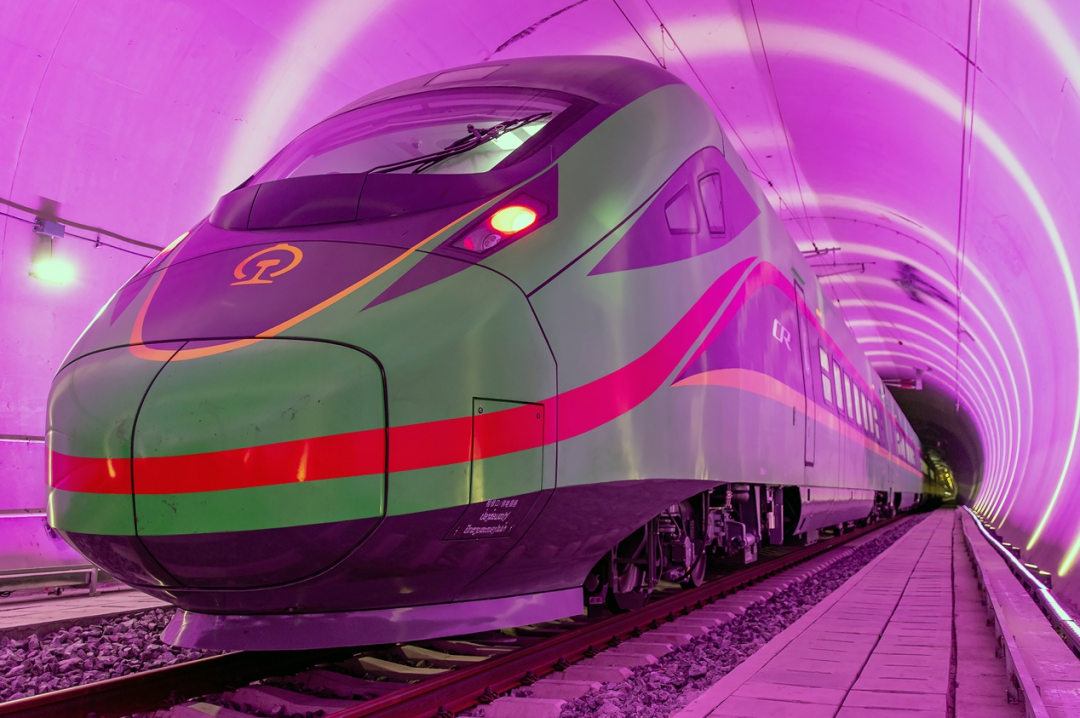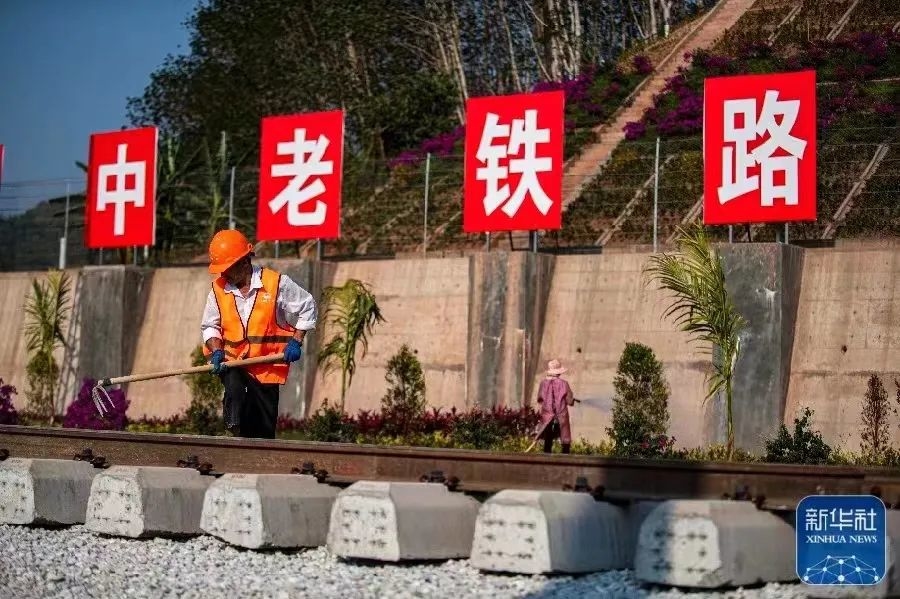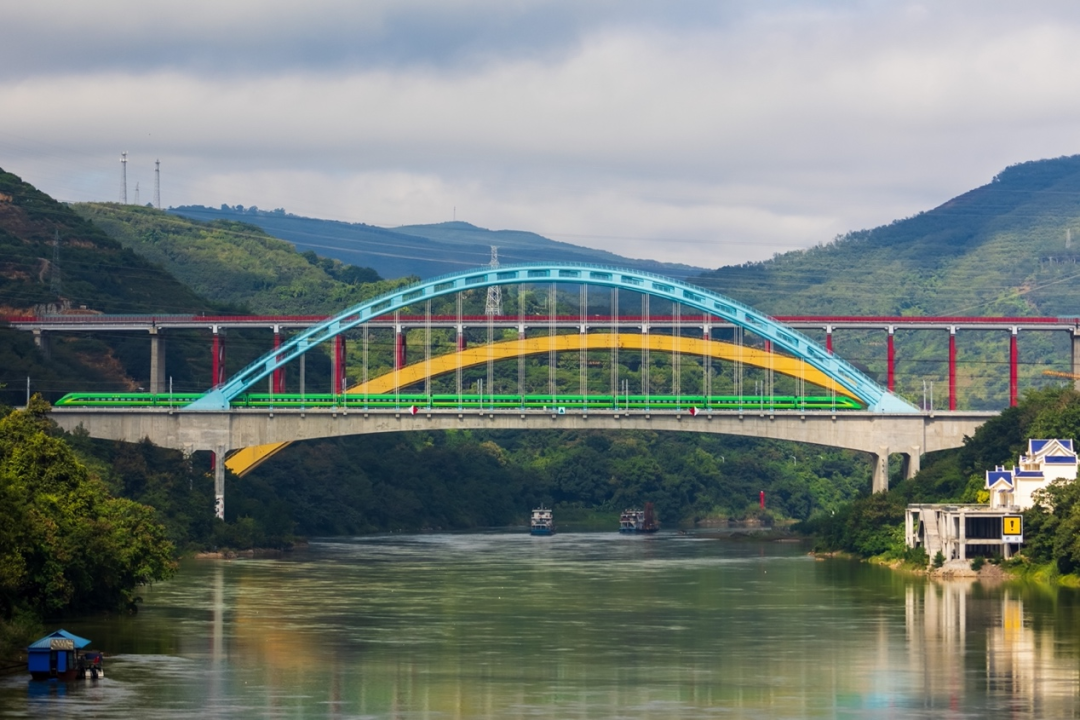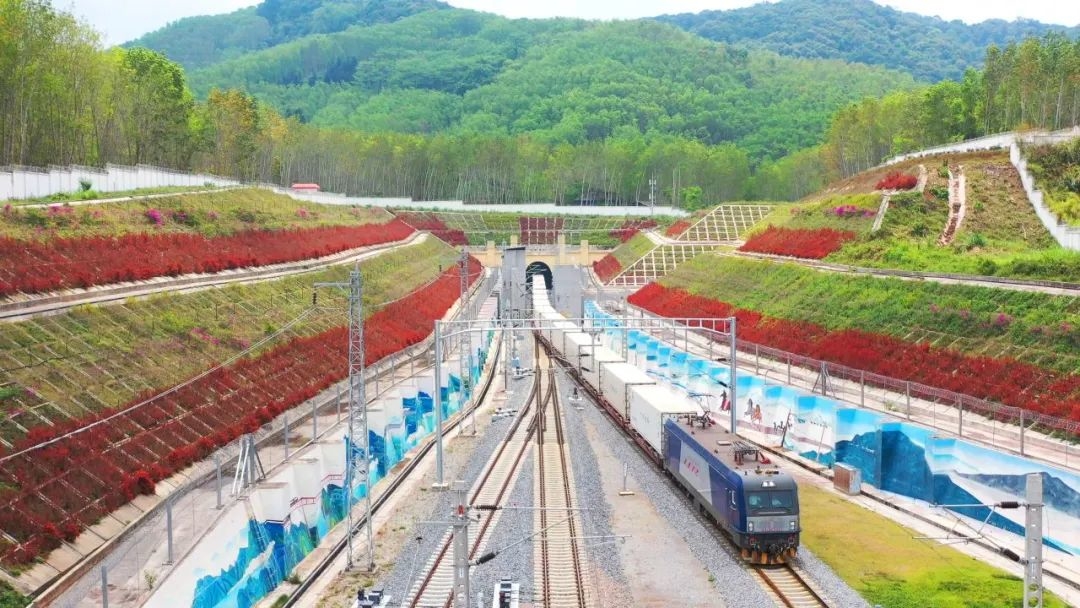15
2023.08
Have you seen elephants at any railway station? The Wild Elephant Valley Station along the China-Laos railway may surprise you.
According to railway staff Zhang Weiming, not long before, a herd of elephants came towards the railway station, frightening his colleagues. "It turned out that there was white sugar piled in the station. Elephants have a keen sense of smell and like to eat sweet food," Zhang said. After figuring out what happened, the staff led the elephants to their natural habitats to avoid any conflicts.
This is not the only case where elephants and other animals are seen around the railway station. The China-Laos Railway valued green development and environmental protection all through its construction and operation.
Operated in December 2021, the 1035-kilometer-long railway links the Lao capital Vientiane with Kunming, the provincial capital of Yunnan in southwestern China. Along the way, there are 20 nature reserves, five scenic spots and three national forest parks.
Human and wildlife coexistence
Located in the Yunnan Province’s Xishuangbanna, a place famous for its tropical forest and wild elephants, the Wild Elephant Valley Station is one of the 11 stations along the China-Laos Railway. The station is built near a UNESCO reserve. When conducting patrols at night, the railway staff would easily encounter elephants, snakes and other animals.
The design of the station was inspired by the wild elephants, using grey and white as background color, the bergamot yellow and palm green as decorating color, as Deng Yu from the China Railway Kunming Group introduced. Looking from afar, the station is like an elephant with its trunk spraying water into the sky, meaning good luck and happiness.

The Wild Elephant Valley Station
(from China Railway)
To minimize the influence on the ecological environment, the builders of the China-Laos Railway investigated the distribution of elephant groups and migration channels during construction to avoid the main area of their activity.
They holed the tunnels through the mountain and most of the construction operations were carried out completely underground. They also replaced railway roads by bridges and prepared special underpass for wild elephants to use.

The train passes through the tunnel
(from China Railway Kunming Group)
"To prevent the elephants from entering the train operation area and getting hurt, we built a 42.9-kilometer protective fence along the railway," said Deng. She also mentioned that the thorn roller cage on the top is pointing inward, so even if an elephant come near the fence, it won't be harmed.
Using tunnels and bridges, the builders of the China-Laos Railway is making efforts on maintaining the balance of nature and protecting the biological diversity. The China-Laos Railway promotes the harmony and coexistence between wildlife and human beings.
Natural scenery preservations
Called as the "green giant," the China-Laos Railway not only brings convenient transportation to the people, but also provides green, natural and diverse scenery along the line. Passing through the places along the railway is like passing through gardens, said Zhang.

Workers working on the green space
(from Xinhua News Agency)
The railway passes through natural reserves such as the tropical rainforests in Xishuangbanna and many environmentally sensitive areas. Mountains and rivers spread all over Yunnan and northern Laos, bringing up huge challenges for both the construction of the railway and the protection of the natural environment.
To address this challenge, 167 tunnels and 301 bridges were built along the way, bypassing the mountains and rivers to protect the local environment. More than 87 percent and 63 percent of the railways in the Chinese and the Lao section are tunnels and bridges.
Tunnels were built to minimize the impact on the environment. In Xishuangbanna, a place with a forest coverage of up to 81 percent, a tunnel was built with two excavation faces instead of three as originally designed, reducing the damage to the plants and the land.
The design of the bridges and tunnels along the railway also considered the environment in local residences. For example, the 3.5-kilometer Ganlanba bridge in Xishuangbanna, the longest bridge in the Chinese section of the railway, is supported by as many as 108 piers to pass through the local fields, fish ponds, banana forests, rubber forests with minimized land destruction.

The Ganlanba bridge
(from China Railway Kunming Group)
The China Railway Kunming Group also invited experts to decide what kinds of flowers and plants to grow in different regions based on their climates and environments.
They planted a total of over 28.6 million shrubs of various kinds under the bridges along the Chinese section of the China-Laos Railway, making the green coverage ratio in the region up to 100 percent and the green area as large as 3 million square meters.
"Our goal is to overlook the China-Laos Railway from the sky without seeing any scars on the land," said Li Zhengzhong, a staff in charge of railway operation at the China Railway Kunming Group.
Pollution prevention and
green development
The China-Laos Railway is also in line with avoiding pollution during construction and operation.
During construction, special methods were also utilized to avoid pollution. Most bridges such as the Yuanjiang Railway Bridge and the Lancang River Railway Bridge were built by workers in a closed hanging "basket" above the rivers to prevent concrete and welding spatter from falling into the rivers, according to China Railway Kunming Group.

The eco-environment protection is vital
during the railway construction
(from China Railway Kunming Group)
Innovative technologies such as IBIM 3D visualization modeling, intelligent construction sites, and VR safety experience have been fully utilized to build an energy-saving and environmentally-friendly railway.
The allocation rate of power- and water-saving equipment and facilities in the station buildings of the China-Laos Railway has reached more than 80 percent and 100 percent respectively.
The China Railway Kunming Group also aimed at reducing pollution during transportation. Coal transportation, for example, often results in severe air pollution. According to Deng, the Group designed and used open-top containers for transportation to prevent coal from fleeing to the sky, thus decreasing air pollution and also reducing cargo damage.
Now farmers along the railway can even plant mulberry trees that demand high qualities of growing environment, Deng said.
"Not only has air pollution been controlled, the local residents can also earn money by planting mulberry trees," Deng said. She said whether it's the way they built the railway, or the way they transport, they are always trying to minimize the negative impact on the environment and achieve green development.
Written by Gao Yifan, Han Ruirui

2023.08.14 13:45
05
2025.09
05
2025.09
09
2025.06
 28:32
28:32
2025.06.19 08:55